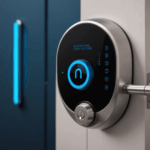Before embarking on the journey to transform your basement into a clean and organized space, it’s crucial to first assess the clutter. This initial step forms the foundation of a successful decluttering process, enabling you to make informed decisions about how to proceed effectively. Analyzing the current state of your basement allows you to understand the scope of the task at hand and prioritize the various elements within it.
Begin by taking a comprehensive survey of the basement. As you move through the space, consider the types of items you have accumulated. Are there old, forgotten family heirlooms mixed in with boxes of random seasonal decorations? Identifying what’s in your basement will help you categorize and decide what stays, what goes, and what might need professional attention, such as hiring pros for items that cannot be easily handled alone.
During this assessment phase, categorize items into broader groups, such as:
- Sentimental or valuable items that may require special handling or storage solutions;
- Everyday items that need clean, accessible storage for regular use;
- Unwanted items, which can be further evaluated for donation, sale, or disposal;
- Hazardous materials like old paint cans or cleaning chemicals that need to be disposed of safely.
It’s also important to consider any structural obstacles or mechanical fixtures that might interfere with your cleaning plans. Look out for things like the HVAC system, water heaters, or electrical panels that might require space or clearance for maintenance and should not be blocked. Knowing where these important systems are can help inform how you organize the rest of the space.
| Type of Item | Suggested Action |
| Sentimental/Valuable | Consider protective storage solutions such as airtight bins or display cases. |
| Everyday Use | Identify frequent use items and position them for easy access. |
| Unwanted Items | Evaluate for potential donation, sale, or appropriate disposal. |
| Hazardous Materials | Arrange for proper disposal as per local regulations. |
This assessment process can initially be overwhelming, especially if the basement has not been addressed for a long time. However, by approaching it methodically and with clear intent, you ensure that your pathway to a clean and organized basement is well-paved. Additionally, involving family members in this process can not only expedite the task but also allocate the decision-making regarding communal possessions.
Organize and categorize

With the clutter identified and categorized, the next critical step is to systematically organize and categorize the items in your basement, ensuring that the space remains functional and clutter-free. A well-structured approach will not only make the area more visually appealing but will also increase its usability for the long haul.
- Sort and Prioritize: Based on your earlier categorization, sort each item into designated piles. Create a distinct space for items you intend to keep, donate, sell, or dispose of responsibly. Utilize bins, boxes, and bags to keep these categories physically separated, making the subsequent steps smoother.
- Select Storage Solutions: For items intended to remain in the basement, choose appropriate storage solutions to fit their purpose and frequency of use. Consider shelving units for easy-to-reach storage, transparent bins for quick visibility, and label containers clearly to avoid future confusion. Remember that items you use frequently should be stored in easily accessible places, whereas seasonal or rarely used items can be stowed away in harder-to-reach spaces.
- Create Zones: Designate specific areas of your basement for different categories of items or activities. For example, create a family recreational area, a storage zone for tools and craft supplies, and a separate section for holiday decorations. This zoning aids in maintaining order over time and makes the organization process clearer to anyone who might be involved in using the space.
- Maximize Vertical Space: Utilize the vertical space within your basement to free up floor space and keep your items organized. Install sturdy shelving units on walls or use tall cabinets to store items like cleaning supplies or hobby materials. This technique is especially useful in smaller basements where space is at a premium.
- Implement Good Lighting: A well-lit basement helps in maintaining established organizational systems. Consider adding overhead lights or wall-mounted fixtures, especially in areas dedicated to frequently accessed items. This not only enhances visibility but also discourages the family from inadvertently making a mess due to insufficient lighting.
- Plan for Adjustment: Understand that organization needs may change over time, and your approach should be flexible enough to adapt. As your family grows or interests shift, you’ll want to be able to easily reorganize areas of the basement to fit new needs without starting from scratch. Regularly review the contents and layout, making adjustments as necessary to keep the basement serving its intended function efficiently.
Giving careful thought to how you organize and categorize items simplifies future maintenance and makes accessing items easier, eliminating the frustration that often accompanies cluttered spaces. This detailed process not only enhances the usability of your basement but also allows you to create a more pleasant environment that the whole family can enjoy.
Deep cleaning techniques
 To truly transform your basement into a pristine environment, employing effective cleaning techniques is paramount. Start by clearing the room to reveal the floor and surfaces you’re dealing with. This might involve moving items temporarily, but it’s essential for an exhaustive clean. Tackle the ceiling, walls, and floors by working from the top down, which ensures that any debris or dust falling from above gets cleaned up as you progress.
To truly transform your basement into a pristine environment, employing effective cleaning techniques is paramount. Start by clearing the room to reveal the floor and surfaces you’re dealing with. This might involve moving items temporarily, but it’s essential for an exhaustive clean. Tackle the ceiling, walls, and floors by working from the top down, which ensures that any debris or dust falling from above gets cleaned up as you progress.
Ceiling and Light Fixtures: Begin with the ceiling. Use a microfiber duster or vacuum with an extension to remove cobwebs and dust. Pay particular attention to light fixtures, as these often harbor dust and bugs. If your fixtures are removable, consider taking them down and washing them gently with a mild soapy solution; ensure they are completely dry before reassembly to avoid electrical hazards.
Walls: Next, focus on the walls. Vacuum with a brush attachment or use a dust mop to clean away any dust. For painted or paneled walls, wipe them down with a damp cloth and a gentle cleanser. This step not only cleans but also helps to identify any wear or water damage that may require further attention.
Flooring: Move on to the floor. Depending on the material, you will need different approaches. For concrete floors, a robust broom for sweeping and a mop with a mild cleaning solution will do the job. If carpeted, use a vacuum to thoroughly clean, paying extra attention to the corners and edges. In cases of heavy stains, consider hiring pros to deep-clean the carpet, ensuring it remains in top condition.
Windows and Vents: Clean windows and any ventilation openings thoroughly. Use a glass cleaner or a distilled vinegar solution for windows to ensure streak-free surfaces. Ensure HVAC vent openings are dust-free and functioning properly, as this significantly affects the air quality in your basement.
Persistent Odors: Basements can often harbor unpleasant odors due to trapped moisture or poor ventilation. To manage this, place a dehumidifier in the room to reduce humidity levels. Charcoal briquettes, baking soda, or commercial odor absorbers strategically placed can help neutralize lingering smells.
Final Touches: After the major cleaning, add final touches by disinfecting commonly touched surfaces such as door handles and light switches. This step not only ensures cleanliness but also adds a layer of hygiene particularly important for family health. Utilizing a UV sanitizer can also assist in killing unseen bacteria in your basement environment.
By meticulously applying these deep cleaning techniques, your basement transforms from a neglected space into a clean, inviting area. This encourages regular use and enjoyment by the entire family, while also prolonging the life of your possessions and preventing future issues. A thoroughly cleaned basement serves as the foundation of a healthy home, making it a worthwhile endeavor for homeowners looking to maximize their space.
Pest and mold prevention
 When it comes to maintaining your newly organized and clean basement, safeguarding it from pests and mold is essential. Basements, with their cooler and damp environments, can unfortunately become breeding grounds for unwanted invaders if not properly safeguarded. Start by addressing any existing moisture problems, as these can significantly contribute to mold growth. Regularly inspect the basement for leaks or signs of water intrusion, especially after heavy rains. Waterproofing measures, such as sealing cracks in walls and floors or installing a sump pump, can be effective long-term solutions.
When it comes to maintaining your newly organized and clean basement, safeguarding it from pests and mold is essential. Basements, with their cooler and damp environments, can unfortunately become breeding grounds for unwanted invaders if not properly safeguarded. Start by addressing any existing moisture problems, as these can significantly contribute to mold growth. Regularly inspect the basement for leaks or signs of water intrusion, especially after heavy rains. Waterproofing measures, such as sealing cracks in walls and floors or installing a sump pump, can be effective long-term solutions.
Ventilation is crucial in preventing both pests and mold. Ensure that your HVAC systems are functioning optimally to provide adequate air circulation throughout the basement. This not only helps in maintaining a consistent temperature but also reduces humidity, thereby creating a less hospitable environment for mold spores. Consider the installation of a dehumidifier, particularly in regions prone to high humidity.
When it comes to pests, prevention is your best defense. Inspect for and seal any entry points such as gaps around windows, doors, or plumbing. Pay special attention to vents and ensure they are covered with fine mesh to prevent insects and rodents from making unwelcome visits. Additionally, avoid storing items directly on the floor; instead, use elevated shelving units. This not only helps in maintaining an organized space but also discourages pests from settling under cluttered piles.
Hygiene plays a pivotal role in preventing infestations. Regular deep cleaning of the basement, including vacuuming and wiping down surfaces, helps eliminate food particles and other attractive elements for pests. When using cleaning agents, focus on natural deterrents too, such as peppermint oil or vinegar solutions, which can be effective in repelling certain insects.
While many preventive measures can be managed independently, some situations might require professional expertise. Hiring pros can be particularly beneficial for dealing with persistent problems or if an infestation has already taken hold. Pest control specialists offer tailored solutions that address both the immediate problem and prevent future occurrences, ensuring your basement remains a safe and pleasant place for your family.
Implementing these pest and mold prevention strategies not only protects the investments of time and effort you’ve made in cleaning and organizing but also creates a safer environment. A well-maintained basement can serve as a functional extension of your home, providing additional space for storage, leisure, or family activities without the fear of health hazards lurking in the corners.
Maintenance and upkeep
 Once your basement is thoroughly cleaned and organized, maintaining this newfound cleanliness and order requires consistent effort and small but regular habits. Setting a maintenance schedule will ensure that your basement remains a tidy and functional space over time, thus prolonging the effectiveness of your initial hard work.
Once your basement is thoroughly cleaned and organized, maintaining this newfound cleanliness and order requires consistent effort and small but regular habits. Setting a maintenance schedule will ensure that your basement remains a tidy and functional space over time, thus prolonging the effectiveness of your initial hard work.
Begin by establishing a routine for regular cleaning. Allocate time once a month to perform a quick sweep of the basement to eliminate dust and address any emerging clutter. Simply dedicating as little as thirty minutes each month to this task can prevent minor messes from escalating into substantial clutter. During these monthly cleaning sessions, check for any signs of moisture or pest activity as well, so you can address them immediately.
Incorporate the practice of rotating your stored items periodically. This is especially true for seasonal items and belongings that are not frequently used. Rotating these items provides two major benefits: it keeps you engaged with everything stored in the basement, reducing the tendency to accumulate unnecessary clutter, and it helps redistribute the basement’s contents, minimizing any damage from settled dust or moisture.
A critical element of upkeep is ensuring that your HVAC system is functioning efficiently throughout the year. Proper ventilation not only maintains air quality but also reduces humidity levels, discouraging mold and pests. Regularly inspect and service the system, and clean out air vents to keep the flow unimpeded.
Additionally, organizing family or household check-ins as part of your maintenance plan is beneficial. Everyone who uses the basement can participate in quarterly walks through the space to reassess storage needs and address any obligations such as disposing of items no longer useful. This collective involvement also makes everyone accountable for keeping the area organized and can become a productive family activity.
Remember that maintenance isn’t just about keeping the physical space tidy; it’s about maintaining the end use of the basement itself, whether that function is for storage, recreation, or hobbies. If your needs change over time, adapt your maintenance practices and organization techniques accordingly. Don’t hesitate to enlist help from professionals (“hiring pros”) when needed, whether it’s for HVAC system enhancements, pest control, or in-depth cleaning services that can offer more extensive upkeep.
By implementing these upkeep strategies, your basement will remain an inviting and useful part of your home. A well-maintained basement not only reflects an orderly living space but also provides peace of mind, knowing that every corner of your home is cared for. With consistent care, your basement can continue to meet your family’s needs in a clean and efficient manner.
In conclusion, transforming and maintaining a clean and organized basement is a rewarding endeavor that enhances your living environment. By assessing clutter, implementing organizational systems, engaging in deep cleaning, and employing pest and mold prevention strategies, you create a functional space that serves your family’s needs. Regular maintenance and attention to detail ensure the longevity of your efforts, providing a stress-free, versatile area in your home.

